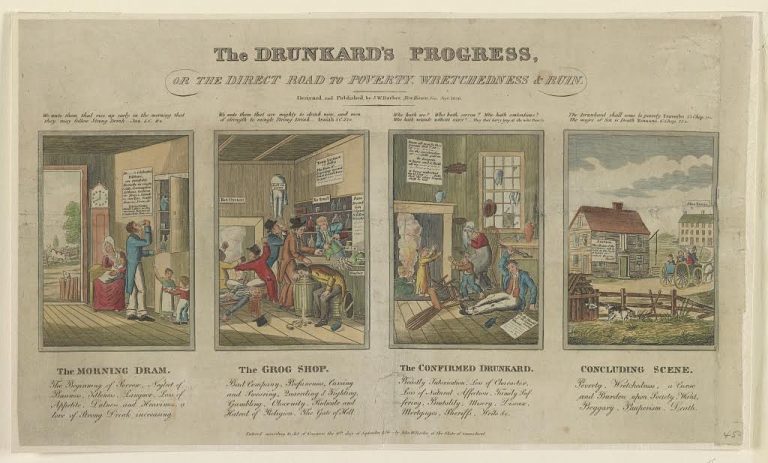Stirring Up History
Former bartender and academic Christine Sismondo writes bar and drinks columns for ROB Magazine, The Grid and Winefox. She’s the author of two books—Mondo Cocktail (A Shaken and Stirred History) and America Walks Into a Bar: A Spirited History of Taverns and Saloons, Speakeasies and Grog Shops, named one of The Boston Globe’s best non-fiction books for 2011. I recently spoke with the Toronto-based writer about America Walks Into a Bar and the genesis of her love for history and cocktails.
For Sismondo, a parental fascination with philately translated into a love of beautiful barrooms. “As a kid growing up in Toronto, my father was a civil servant but had a side business buying and selling stamps, which involved a lot of travel. We would be in a hotel and go out to dinner somewhere and then I would get to go with my parents to the hotel bar while they had a Scotch at the end of the night,” she remembers.
“I’d get to order my fill of ice cream.”
There’s no cautionary tale here. Pre-teen barhopping didn’t turn Sismondo into a junkie or lush. It did, however, initiate a love for history, architecture and cocktail culture.
“I remember loving hotels and old hotel bars, especially the ones built around the turn of the 20th Century — the marble, copper, velvet chairs and rich textures in those rooms. I still like that look,” she says, citing Toronto’s Fairmont Library Bar as a prime example.
America’s Drunk History
Though she’s spent time in the states, the Canadian brought an outsider’s perspective to America Walks Into a Bar, which took an almost scholarly, but never dry, look at the role watering holes played in America’s history.
From the get-go, bars and taverns have been crucial gathering places for Americans. Sismondo documents the importance of bars to the earliest colonists. For example, in Boston, before 1658, "all legal and government proceedings took place in taverns and meeting houses."
AWIB touches on the roles taverns have played in American history and cultural progress from before the revolution through the civil war, anarchistic union rebellions in Chicago, New York’s Tammany Hall machine, and the LGBT rights movements. Readers will also learn the history behind the terms like “Mickey Finn” and motivation for the Women’s Temperance Movement, which led to Prohibition.
Lowly taverns played a noble role
Sismondo wrote the book because she couldn’t find anything similar on the shelves — a work that put the historic role of taverns, saloons, bars, etc. in context. “Before the book I don’t think anyone had thought about putting the whole picture together,” she says.
“People in America have historically gotten together in taverns and bars and bonded to form common ground, discussing what their grievances were and taking action. That strikes me as a remarkable role for an institution to play over and over again.”
While the pursuit of religious freedom may have led many settlers to the new world, taverns often preceded schools, town halls and even churches in new villages. "Taverns were absolutely critical for the new settlers' survival. Establishing a tavern was the first priority — not just the first choice — of every colony."
What's a lady like you doing in a place like this?
Much of our conversation focused on the love/hate relationship between America’s bar culture and women. Through the centuries, this relationship has vacillated from acceptance to banishment to segregation (including the genteel “Ladies Entrance”) to “ladies drink free.”
“In early colonial days, women – especially widows without income – were set up to become tavern keepers,” she says. “Later they were edged out of bars in the saloon era, but the earlier tavern and inn were ‘family friendly’ places.”
During the 19th Century, working class women, especially factory girls, would venture into bars, when possible, often to enjoy the infamous free lunch, a salty buffet designed to incite more beer drinking. “However, middle-class respectability would have kept women out until the days of Prohibition. Though certainly (anarchists like) Emma Goldman always went to bars.”
Prohibition and the Jazz Age raised hemlines and broke down barriers. “The story has been that during Prohibition you would see a different type of woman going into speakeasies. By making it illegal, women were challenging boundaries,” she says.
And then the repeal of Prohibition put many of the barriers back up as grumpy old men yearned for the good old days, with many bars reopening as “men’s only” establishments.
“Men would complain, ‘at least in the old saloon we didn’t have to deal with women in here.’”
In some instances, this trend continued for more than three decades following repeal. Coinciding with Stonewall and the early days of gay/lesbian liberation and the women’s rights movement, women got fed up during the late 1960s and early 70s and began fighting for equal access, which was as much about political and workplace equality than happy hour.
“I spoke with Karen DeCrow, who was leader of NOW at the time. She organized protests. It was an important issue because it was obvious to her that if women couldn’t get into bars (when many business deals were made), they couldn’t advance in the workplace,” she says.
In the works
Always publishing shorter pieces, Sismondo is researching her next full-length book. Tentatively titled Toronto the Gay, it takes an historic look at her city’s gay bar scene during the mid twentieth century. “A lot of people imagine that gay bars didn't really exist in Toronto in the 1950s and 1960s, since it was a repressive era and Toronto has a reputation for being pretty boring (Toronto the Good),” she says.
“But we actually had quite a few great gay bars here in that era. Unsurprisingly, people used them to build strong social networks and community, the building blocks for later political activism.”
Visit Sismondo’s website to read more about her work, including the fun 2005 cocktail guide Mondo Cocktail.





